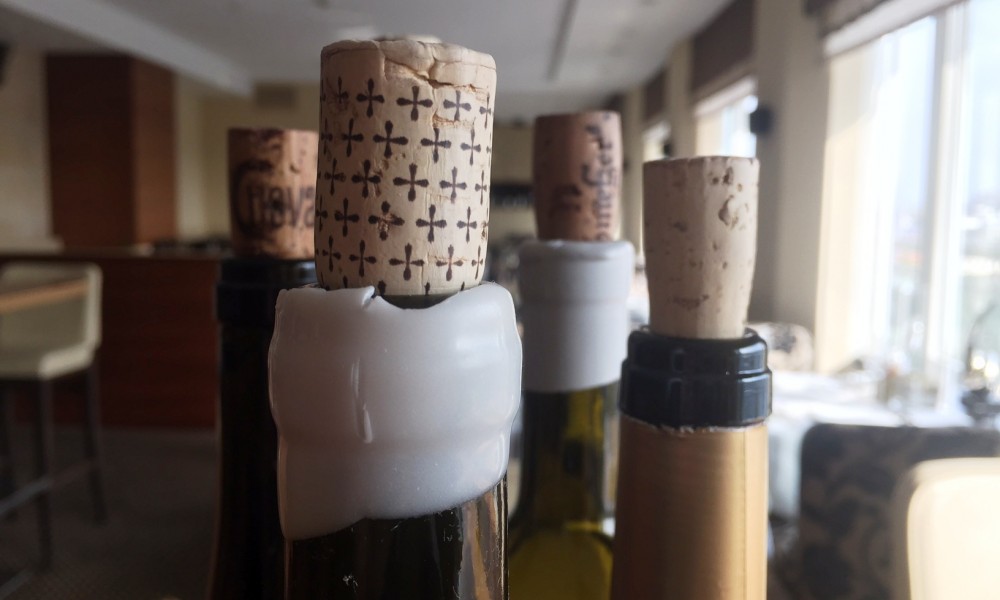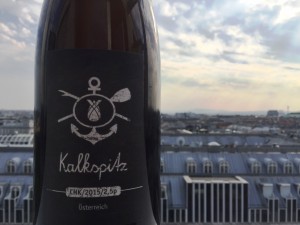Natural Wines with “Schick” – Part 1

There’s a lot of talk at the moment about a special topic: orange wine. Opinions are highly split and the discussion is fueled by misinformation. There’s a lot of differentiation surrounding this sensitive topic. What natural wine actually is, and why the differences are not all that major, come now – from Florian Schnabel, sommelier at the Gault Millau-rated restaurant Das Schick.
 About Florian Schnabel
About Florian Schnabel
At Das Schick, high-quality seasonal and regional products from Austria and Spain are combined into delicious delicacies at the highest level. This cross-national fusion is also reflected in the selection of beverages. Since August 2015, the selection that best suits the range of cuisine, consisting of top Austrian and Spanish wines, beers and the finest brandies from both countries, has been made by sommelier Florian Schnabel (22) with considerable sensitivity and the courage to try new things.
Simple, natural products are especially dear to Schnabel’s heart. “Giving good advice to guests is irreplaceable. You have to adapt yourself every day to every guest” is Schnabel’s motto. It’s thus only natural for Florian Schnabel to address the topic of natural wines in several parts and to give you an understanding of them.
So that this is a special pleasure, Florian Schnabel recommends sipping the following wine while perusing this article:
Kalkspitz Pet Nat
of Christoph Hoch – Hollenburg / Kremstal
a sparkling wine, produced with the méthode ancestrale, also called Pétillant naturel (= „naturally sparkling“), short called „Pet Nat“, a natural form of sparkling wine production.
So pour yourself a glass, get comfortable and… let’s get started with your drinking and reading pleasure.
What is orange wine?
According to general opinion, orange wine is a white wine that is vinified like a red wine, and hence spends more or less time in the slurry. Not bad for starters. But there is a world of difference between a green, grassy sauvignon blanc and an oxidative, unfiltered plant with fermented slurry. It’s like the difference between heaven and earth. Moreover, the definition craze up to now has not exactly cleared up the confusion. Allow me first to interject a term for the whole thing: natural wine, procured from the natural cycle in the production process of the respective object of dispute – for at its root, that is what it’s really all about: the natural balance between people, animals and plants.
Natural wine does not necessarily mean unfiltered, oxidative or even unsulfurated. Let’s take it as a formulation of the basic idea of natural balance described above. The type of wine that comes about is unimportant. Among producers, there are just as many different approaches and tastes as there are among consumers.
Most examples of natural wine do have one thing in common, however: missing added ingredients. There is no addition of specially bred yeast, but rather the use of wild yeasts that can be found naturally in the air, hence spontaneous fermentation.
Another difference is the lack of chemical fertilizers, hence “pure nature,” as kitschy as this may sound. For certification, only fertilizers created by natural processes are permitted, such as chalkstone or pulverized limestone. No pesticides, herbicides or fungicides, which end up in our glasses by way of the soil and into the vines and grapes, are allowed. It’s all about the natural interplay between the vines and the beneficial organisms in flora and fauna.
Natural and biodynamic wines – just a trend or the future?
Here in Austria, this whole subject is often seen as a passing trend. Many companies here and abroad have been practicing such natural handling of nature for decades already, for instance Nikolaihof in the Wachau, one of the most renowned companies in the region. In France, doing business in harmony with nature is common practice. Vintner legends such as Nicolas Joly and Didier Dagueneau have attained worldwide fame for doing so.
Natural Wines at “Das Schick”
The wine list at Das Schick reflects the conviction that we ought to advocate sustainability and natural winemaking. Ultimately, the “connoisseurs” among us should still be able to enjoy a good wine 20 or 30 years from now – without having to fear illness or disease.
In Part 2 of this series (to be published in May 2016), Florian Schnabel will introduce you to one of his favorite Austrian winery that has dedicated itself to “natural wine.”
Save the date – it will be worth reading the article for the next wine tip alone…











